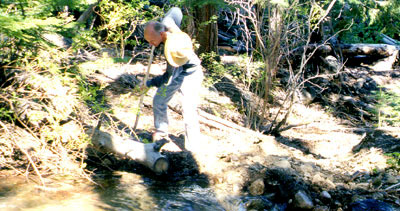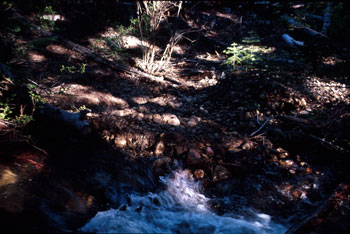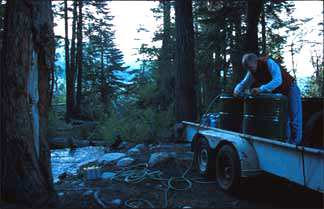
"dam on a creek"
When we arrived at this camp site I found Parker Creek clear, cold, and running fast. I estimate that the stream had a cross-section of about 10 square feet. I explored a short section of the creek and found a place where the water split into two beds, rejoining about 50 yards downstream. The smaller of the two beds was taking about 10 percent of the stream flow. That evening using a shovel I dug rocks and dirt and built a dam to divert all the water into the main stream.
The next morning, when we were each talking about our work, I described my interest in the control of water and about the relationship between mankind and the environment. As I did so I breached the earth dam I'd created the day before and allowed the water to begin eroding the dam away.
In the context of geologic time-frames dams on rivers will have existed for only the few, fleeting moments that mankind had need of that form of power generation, flood control, or irrigation. The mountains above Mono Lake, whose snow feeds this creek, rose to their height two million years ago. Even if no one dismantles the dams (because mankind died off as a species or fled the planet) I submit that there would be no sign of any dam after a thousand years of unimpeded erosion. Let's say that I'm wrong by a factor of ten -- it will take ten thousand years to erase the dams naturally. Even then in the two million year history of the Sierra Nevada there would be time for two hundred civilizations to rise, build dams, abandon them, and let nature remove all evidence of their existence. The earth will bear no long-term sign of man quite shortly (in geologic time-frames) after he is gone.

